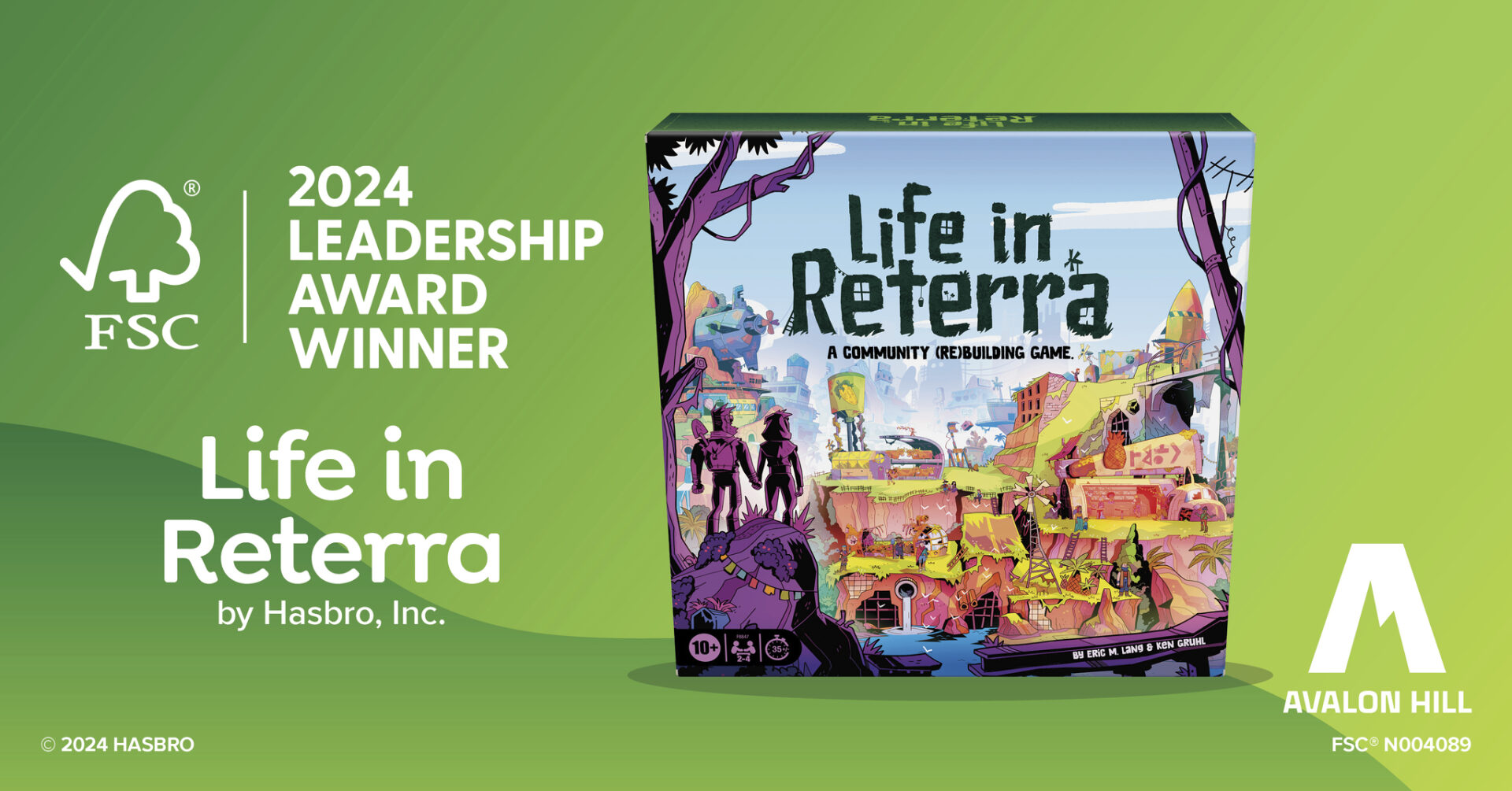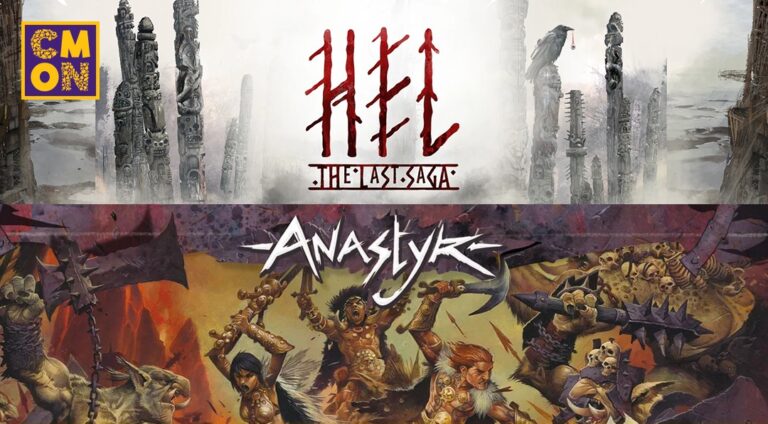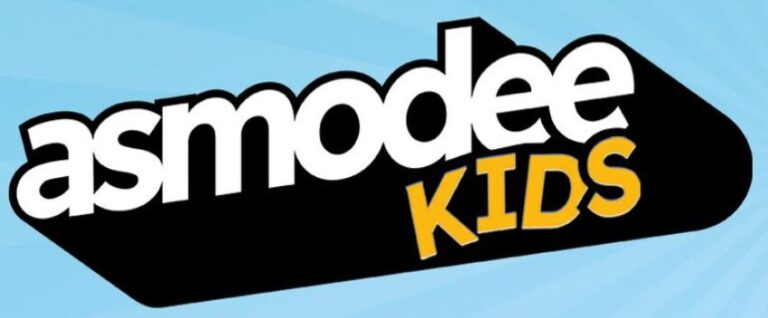
Life in Reterra becomes first board game to win Forest Stewardship Council sustainability award
Life in Reterra, Hasbro’s opening gambit for a push into the light-gateway hobby game segment, has become the first board game to win a sustainability leadership award from the Forest Stewardship Council.
The Eric Lang and Ken Gruhl design, which sees players try to rebuild communities in a post-apocalyptic environment in which nature has reclaimed urban areas, was praised by the FSC for its “strong sustainability themes and artwork that are relatable and resonate with both parents and children”.
All the paper and wood components in the game are made from FSC-certified forests, recycled materials and other controlled sources.
The FSC says it aims to promote environmentally sound, socially beneficial and economically prosperous management of the world’s forests – providing wood products without compromising the health of forests for future generations.
Other winners in this year’s Leadership Awards included Menominee Tribal Enterprises and the Milwaukee School of Engineering, for collaborating on The Giving Forest Game, a video game that teaches players about sustainable forestry.
FSC US president Sarah Billig said, “These remarkable organizations are leading the charge from forest stewardship to final product, inspiring us all with their commitment to responsible forest management.
“Their work sets a powerful example for sustainable practices across the entire supply chain, paving the way for a future where forests and the people who depend on them thrive for generations to come.”
A statement from Hasbro said the firm was “very proud that a game inspired by ecological succession has become the first board game to win an FSC Leadership award”.
Sustainability is becoming an increasingly important consideration within board gaming, given the industry’s heavy usage of wood and cardboard, as well as its reliance on China-based manufacturing and shipping large quantities of games around the world.
Last year a group of board game publishers, designers, manufacturers and players came together to launch the Green Games Guide, which provides advice and guidance for minimising and eliminating carbon emissions, reducing, reusing and recycling materials and boosting recognition of workers rights and local cultures.
Board game publishers which have made a high-profile push on sustainability include Czech Games Edition, which introduced its eco-friendly RE-Wood material for its Spiel 2023 release Kutná Hora: The City of Silver.
The technology combines wood waste and recycled binding material in an 80:20 ratio to create biodegradable products – which CGE says allows for more intricate model design than traditional wood, while boasting faster production times.
Other examples include Earthborne Games, the publisher of co-operative card game Earthborne Rangers, was founded four years ago by former Fantasy Flight Games designers and artists on the principle that tabletop games “can and should be manufactured sustainably”.
Its debut Kickstarter for Earthborn Rangers came with a pledge to create the game sustainably, targeting suppliers and manufacturers offering carbon-neutrality, eco-friendly materials, efficient energy use and waste reduction.
The company settled on Germany-based Ludo Fact for its first print run, and delivered a game which contained no plastic of any kind and which was fully recyclable and compostable – unlike most modern board games, which are frequently not recyclable due to plastic coatings and cores on cards and boards.
Earthborne’s core game and card expansions are all FSC certified for their paper and packaging, coatings are done with a water-based laminate and printing with vegetable-based inks.
In the same vein, Weird City Games committed to producing its latest Kickstarter, March of the Ants: Evolved Edition, with zero plastic – replacing wrappers on the cards and game box with paper bands or small stickers, and switching out plastic bags for paper envelopes. It also committed to keeping the game box as compact as possible to reduce resources used in shipping.






[…] Life in Reterra becomes first board game to win Forest Stewardship Council sustainability award […]
[…] Life in Reterra becomes first board game to win Forest Stewardship Council sustainability award […]
[…] Life in Reterra, Hasbro’s opening gambit for a push into the light-gateway hobby game segment, is up against Ravensburger’s Chronicles of Light: Darkness Falls and The Op’s Gnome Hollow in the award category – an unprecedented showing for hobby games in the 25-year-old competition. […]